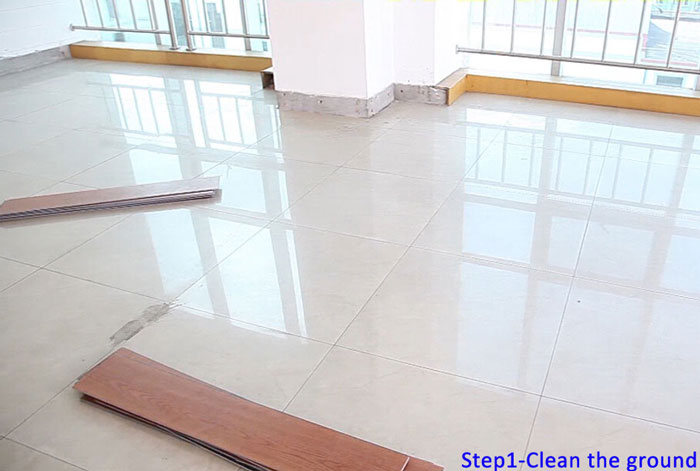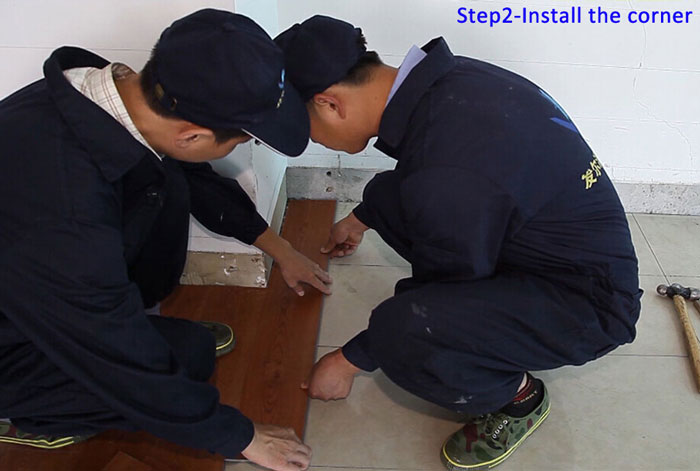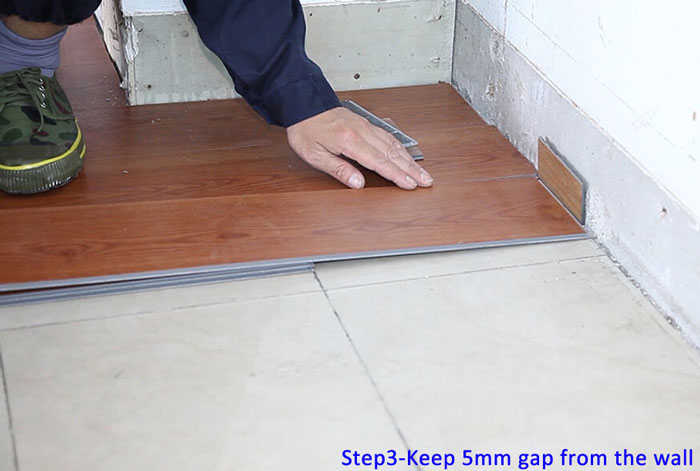News & Events
Solid Resilient Flooring (SPC) - Installation & Care Instructions(A)
PLEASE READ THE ENTIRE INSTALLATION INSTRUCTIONS BEFORE PROCEEDING WITH THE ACTUAL INSTALLATION.
GENERAL INFORMATION
These installation specifications are for Solid Resilient Flooring (SPC). All recommendations are based on the most recent available information.
The information on this sheet provides general guidelines. All instructions and recommendations must be strictly followed for a satisfactory installation.
* The floor covering should be stored and installed in climate constant or climate controlled indoor location with an average temperature of between 65°-85°F or 18°-29°C and a humidity range of 30-50%.
* To minimize shade variation, mix and install planks from several cartons.
* Note that color uniformity of the planks can only be guaranteed for deliveries of the same production lot.
* No complaints can, in any case, be accepted for flooring that has been cut to size or installed.
* All necessary subfloor patching must be done with a non-shrinking, water-resistant filler. Follow strictly the instructions from DIN 18365 and DIN 18202.
* As a rule: install all planks parallel to the main source of light in the room. Only in small and long and small rooms Solid Resilient Flooring (SPC) must be installed in longitudinal direction.
SUB FLOOR INFORMATION
Correct preparation of the subfloor is a major part of a successful installation.
Roughness or unevenness of the subfloor may telegraph through the new floor covering, resulting in an unsightly surface and excessive wear on high spots.
ALL SUB FLOORS MUST BE:
* CLEAN - Scraped or sanded, swept, free of wax, grease, paint, oil, previous or existing glues or adhesives, and other debris.
* SMOOTH/FLAT - Within 3/16” on 10’ radius. Sand high areas or joints, fill low areas (no more than 1/8”) with a cement type filler no less than 3000 p.s.i. Any irregularities may cause hollow spots between the flooring and sub floor in any installation method and are not warranted.
* STRUCTURALLY SOUND - Nail or screw any loose areas that squeak. Replace any delaminated or damaged sub flooring or underlayment.
WOOD SUBFLOORS
* Do not install Solid Resilient Flooring (SPC) over wood subfloors which lay directly on concrete or over sleeper construction.
* All wood and wood composition panels are suitable for the use under Solid Resilient Flooring (SPC) providing that they are smooth, flat, structurally sound and free of deflection. The panels include plywood, particle board, oriented strand board (OSB), flake board and wafer board.
* If the surface of the wood subfloor is not smooth, a ¼’’ or 6mm underlayment panel must be installed over the subfloor.
CONCRETE SUBFLOORS:
* The concrete subfloor must be dry, smooth and free from dust, solvent, paint, wax, grease, oil, and any other extraneous materials. The surface must be hard and dense, and free from powder or flaking.
* New concrete slabs must be thoroughly dry (at least six weeks) and completely cured. The final responsibility for determining if the concrete is dry enough for installation of the flooring lies with the floor covering installer. Although Solid Resilient Flooring (SPC) is not susceptible to damage from moisture, excessive subfloor moisture is an ideal breeding ground for moldiness, mildew and fungus. The limited warranty does not cover discoloration from mold or mildew or from any kind of water damage caused by flooding, leaking or similar conditions. If needed, ask for Solid Resilient Flooring (SPC) warranty conditions at your dealer.
* Holes, grooves, expansion joints and other depressions must be filled with a latex underlayment, and trowelled smooth and feathered even with the surrounding surface.
Concrete floors with a radiant heating system are allowed, provided that the temperature of the floor does never exceed 89°F or 32°C. Before installing the flooring, the heating system must be turned on to eliminate residual moisture.
EXISTING FLOOR COVERINGS:
* Solid Resilient Flooring (SPC) can be installed over most existing hard–surface floor coverings, provided that the existing floor surface is smooth or can be made smooth.
* Ceramic tiles should be made smooth by applying a cementitious overlay such as patching or levelling compound.
* When the removal of the existing resilient floor covering is not an option then it must be covered with a leveller or equivalent in order to adjust it. Existing sheet vinyl floors should not be heavily cushioned and must consist of only one layer.
CAUTION: Some types of nails, such as common steel nails, may cause a discoloration of the vinyl floor covering. The method of gluing and screwing the underlayment panels is not recommended. Solvent based construction adhesives are known to stain vinyl floor coverings. All responsibility for discoloration problems caused by the use of the above mentioned products is not the responsibility of the producer but rests with the installer.
FLOATING FLOOR INSTALLATION
**RECOMMENDED METHOD OF INSTALLATION REQUIRED TOOLS AND ACCESSORIES**
* Tape Measure
* Moisture Meter (wood / concrete)
* Circular or Hand Saw
* Pull Bar
* Safety Equipment (Goggles & Mask)
* Utility Knife
* 1/4’’ Spacers
* Broom
Solid Resilient Flooring (SPC) is designed to be installed with the floating method and can be installed below grade, on grade or above grade. However the following instructions must be followed:
Important: The flooring should be installed from several cartons at the same time to insure proper color and shade mix.
* Undercut all doorjambs if necessary. Use a piece of flooring as a guide as to how much to saw. Put the floor panel faced down as a guide, saw off the bottom of the door frame to allow the floor panel to slide under it.
* Before you start with the installation, it is important to determine the layout of the flooring. Proper planning and layout will prevent having narrow plank widths at wall junctures or very short length pieces at the end of rows.
* Before starting, first measure the width of the room, and then divide the room’s width by the width of the plank. If this means that the last row of planks will be narrower than 2’’, then you will need to cut the first row of planks to make it narrower. Cut in such a way that both rows of planks (the first and last to be installed in the room) will have the same approximate width for an overall continuous look.
* Use 1/4’’ (5mm) expansion spacers to provide a gap for the seasonal expansion of the flooring along the walls of the entire room. Always place expansion spacers against the wall where the two boards meet. This will make maintaining a good square easier.
* Even if the first row of planks does not need to be trimmed in width, it will be necessary to cut off the unsupported tongue so that a clean, solid edge shows towards the wall.
* Installation of the product must start from the left side to the right of the room.
The following photos are part of installing steps. See more pls check here.



Click here to see Solid Resilient Flooring (SPC) - Installation & Care Instructions(B)
Click here to see Solid Resilient Flooring (SPC) - Installation & Care Instructions(C)





.png?v=20250403)


 Richard Liu
Richard Liu +86.519.8585.1798 Fax:+86.519.8585.6878
+86.519.8585.1798 Fax:+86.519.8585.6878 info@xinflooring.com ( 7*24 hours online)
info@xinflooring.com ( 7*24 hours online) Science & Technology, Industrial Park, Hutang Town, Wujin District, Changzhou City, Jiangsu Province, 213162, China.
Science & Technology, Industrial Park, Hutang Town, Wujin District, Changzhou City, Jiangsu Province, 213162, China.